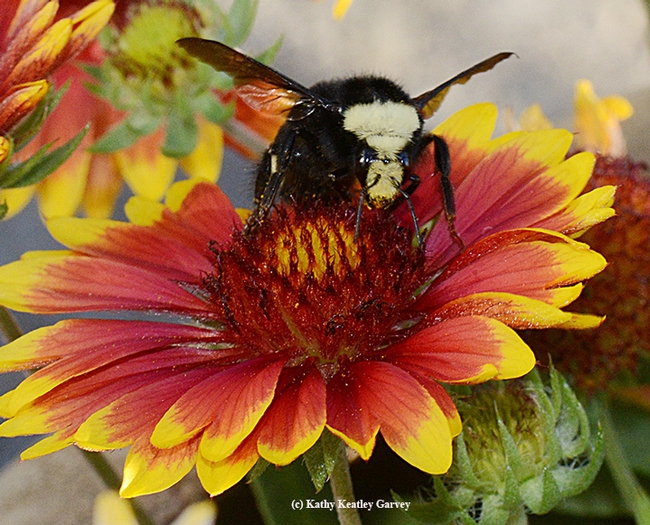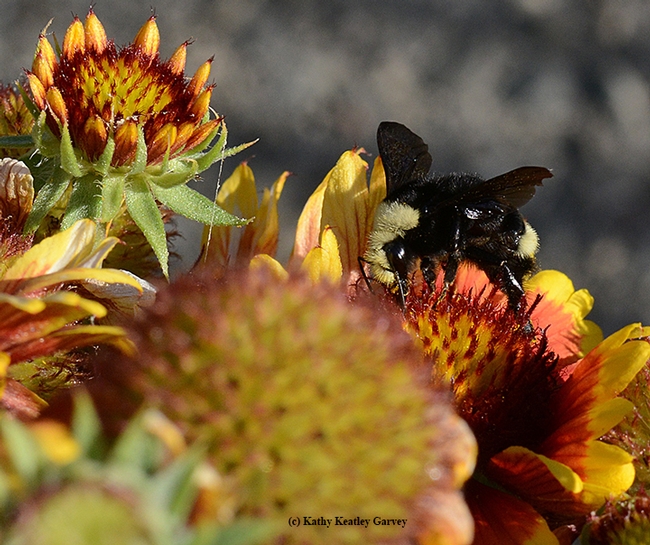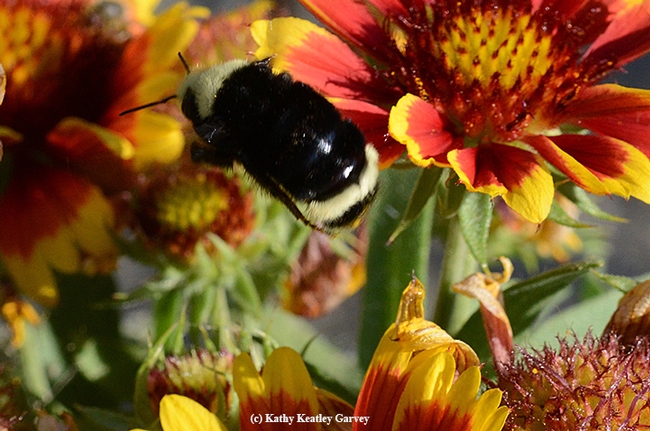What's better than sighting a yellow-faced bumble bee, Bombus vosnesenskii?
Well, a newly emerged Bombus vosnesenskii queen.
On the last day of June, we spotted this fresh queen-looking foraging on our blanket flower (Gaillardia). Her jet-black color, sunny yellow markings, and untattered wings indicated that this was one of her first flights. Queen bees are huge--about 18 to 21mm long--much larger than the other bees in her colony. Workers (females) range from 8 to 17 mm while males measure between 10 and 15mm.
The queen took a liking to the blanket flower, buzzing from blossom to blossom and sharing communal meals--sweet nectar--with honey bees, longhorned bees, and carpenter bees. A camouflaged crab spider, sprawled out on the top of a blossom, itched to get in on the feeding action by snagging an inattentive bee, but the bees buzzed right past their would-be predator. Not today!
Bombus vosnesenskii is one of only 250 species in the genus Bombus, which is Latin for "buzzing." Native to the west coast of North America, Bombus vosnesenskii is considered the most abundant bumble bee from British Columbia to Baja California. Its importance to agriculture is crucial: it's commonly invited to pollinate commercial greenhouse tomatoes, which it does very well. The next time you eat a greenhouse tomato, you should probably thank Bombus vosnesenskii.
Want to learn more about bumble bees? Native pollinator specialist Robbin Thorp, distinguished emeritus professor of entomology at the University of California, Davis, is the co-author of the landmark Bumble Bees of North America: An Identification Guide (with co-authors Paul H. Williams, Leif L. Richardson and Sheila R. Colla), published by Princeton University Press. It's the winner of a 2015 Outstanding Reference Sources Award, Reference and User Services Association, American Library Association.
Want to hear a bumble bee buzz? Just click this link: Bumble Bees of North America: An Identification Guide.
It's almost like bee-ing there.
Attached Images:

A newly emerged yellow-faced bumble bee queen, Bombus vosnesenskii, eyes the photographer as it forages on blanket flower (Gaillardia). (Photo by Kathy Keatley Garvey)

Yellow-faced bumble bee shows its distinguishing marks. This is a queen Bombus vosnesenskii, about 21mm long. (Photo by Kathy Keatley Garvey)

Up and away! A distinguishing feature of Bombus vosnesenskii is the yellow stripe, T4 segment of its thorax. (Photo by Kathy Keatley Garvey)